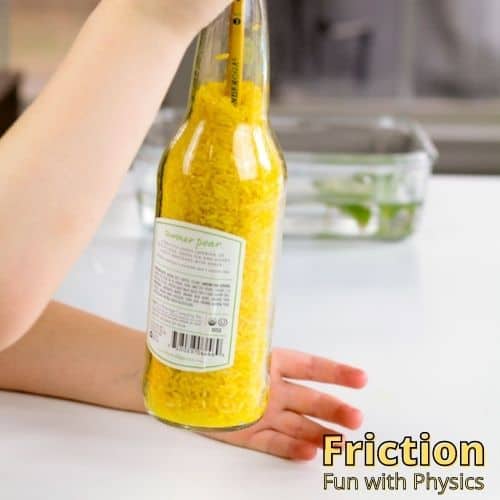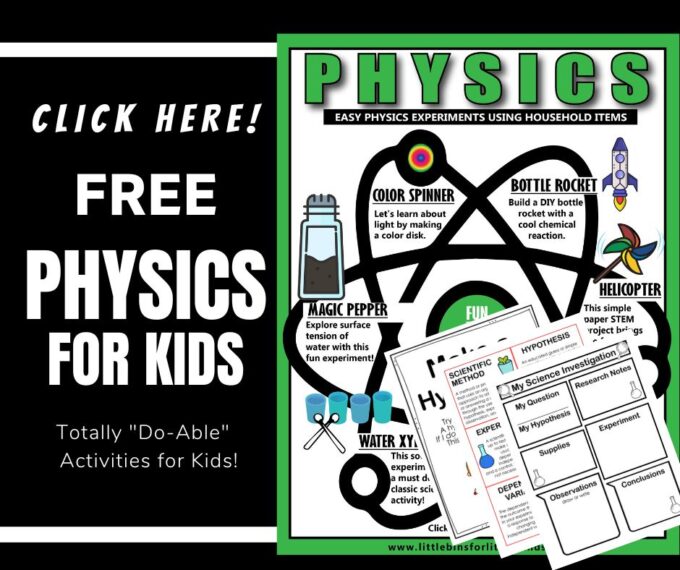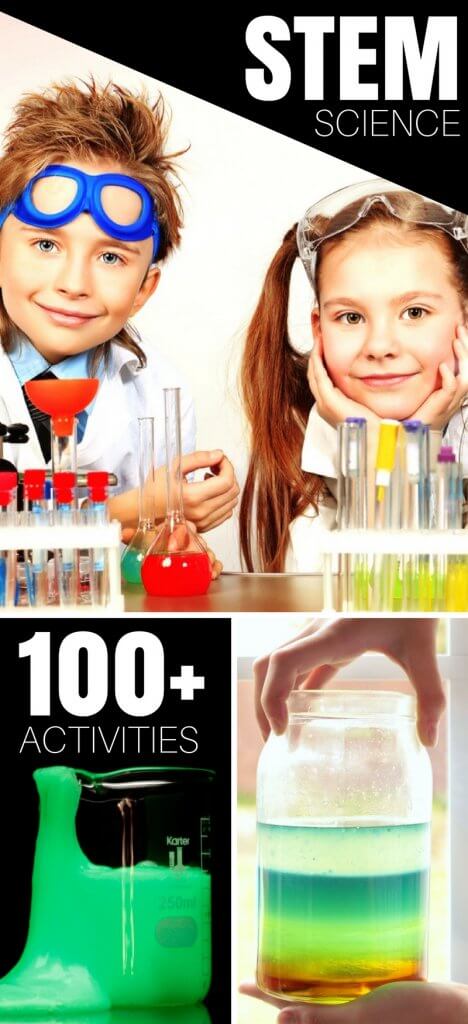Physics is fun and sometimes even a bit like magic! Explore friction with a fun and simple activity that uses classic household supplies. This floating rice experiment is a MUST try for the budding scientist and perfect for all those curious kiddos. Simple science experiments are a great way to engage kids with hands-on learning that is also playful!
Do Pencils Float?
Our Floating Rice Experiment is a fun example of static frictional force at work. We love simple physics experiments and have been exploring science for kindergarten, preschool, and early elementary for over 10 years.
Our science activities are designed with you, the parent or teacher, in mind! Easy to set up and quick to do, most activities will take only 15 to 30 minutes to complete and are fun! Our supplies lists usually contain only free or cheap materials you can source from home.
Grab some rice and a bottle, and let’s find out what happens when you put a pencil in the mix! Can you lift a bottle of rice with only a pencil? Try this fun friction experiment and find out. Make sure to read up on the science behind it too!
Friction for Kids: Quick Facts
What is friction? Friction is a force that acts when two objects are in contact. It slows or stops movement when those two surfaces are sliding or trying to slide across each other. Friction can occur between objects – solid, liquid, and gas.
With solids, the friction depends on the materials the two surfaces are made of. The rougher the surface, the more friction is produced.
There are different types of friction. Static, sliding and rolling friction occur between solid surfaces. Static friction is strongest, followed by sliding friction, and then rolling friction, which is weakest.
Examples Of Friction
Everyday examples of friction include:
- Walking on the ground
- Writing on paper
- Using an eraser
- Working a pulley (See how to make a simple pulley)
- Rolling a ball along the ground
- Going down a slide
- Ice skating
Can you think of more examples of activities made possible by friction?

How Does This Friction Experiment Work?
How does friction work with our floating rice experiment? When the rice is inside the bottle, the grains are next to each other, but there is still space or air between each grain. When you push the pencil into the bottle of rice, the grains are forced together to make room for the pencil.
As you continue to push the pencil in, the grains move closer and closer together until they are rubbing against each other. This is where friction starts to act.
Once the rice grains are packed so closely together that the friction becomes overwhelming, they will push against the pencil with a strong enough force to make the pencil stuck, allowing you to pick up the whole bottle with the pencil.
Click here to get your FREE Physics Ideas Pack!
Floating Rice Experiment
Supplies:
- Uncooked Rice
- Food coloring (optional)
- Bottle (glass or plastic both work- also done this with a 16oz water bottle)
- Pencil
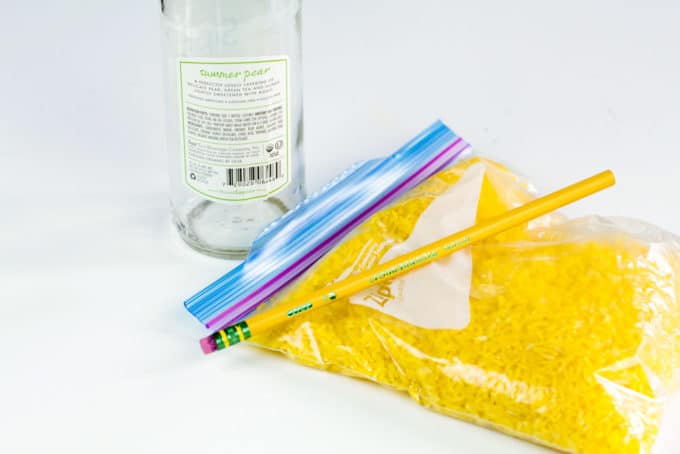
INSTRUCTIONS:
STEP 1. Color the rice yellow (or whatever color) if desired. Check out our step by step instructions for dying rice.
STEP 2. Place the colored rice in the bottle.
STEP 3. Stick the pencil into the rice. Then pull the pencil out.
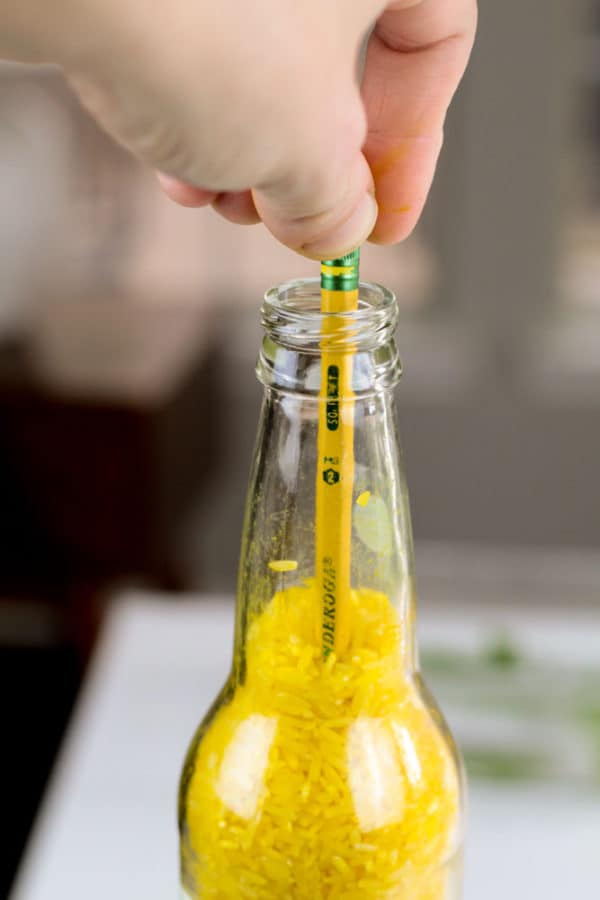
Repeat until the rice is packed tighter and tighter. What do you notice? Can you lift your bottle of rice with just a pencil?
Eventually, the friction between the grains of rice will be so much that the pencil won’t come out, and you can lift the bottle of rice with the pencil.
Want more fun things to do with pencils? Why not make a pencil catapult or try this leakproof bag experiment!
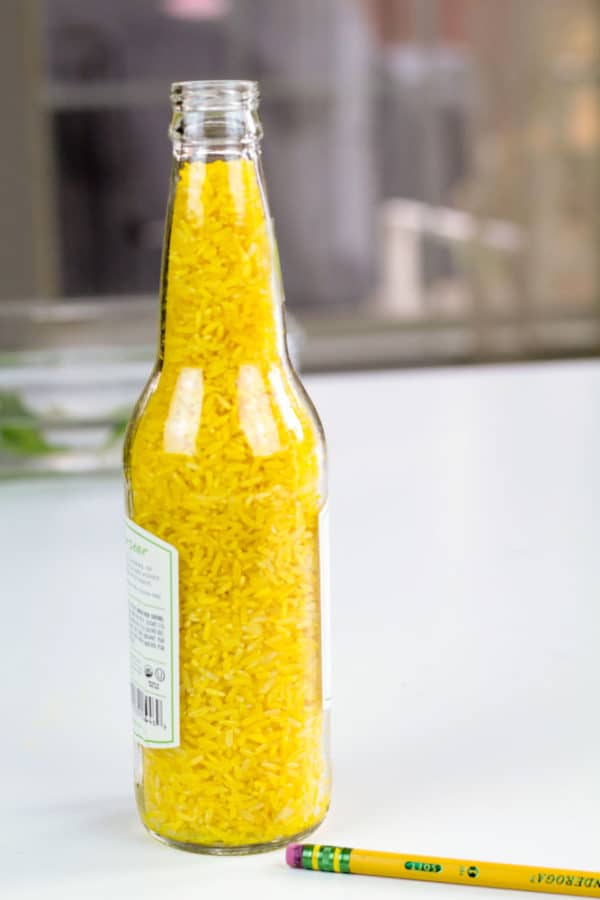
More Fun Physics For Kids
Make simple air foils and learn about air resistance.
Learn about atmospheric pressure with this incredible can crusher experiment.
Explore sound and vibrations when you try this fun dancing sprinkles experiment.
Learn about static electricity with this fun cornstarch and oil experiment.
It doesn’t get much easier than pumpkin rolling on homemade ramps.
Make a rubber band car and find out how to make a car go without pushing it or adding an expensive motor.
Click on the image below or on the link for more science experiments for kids.


